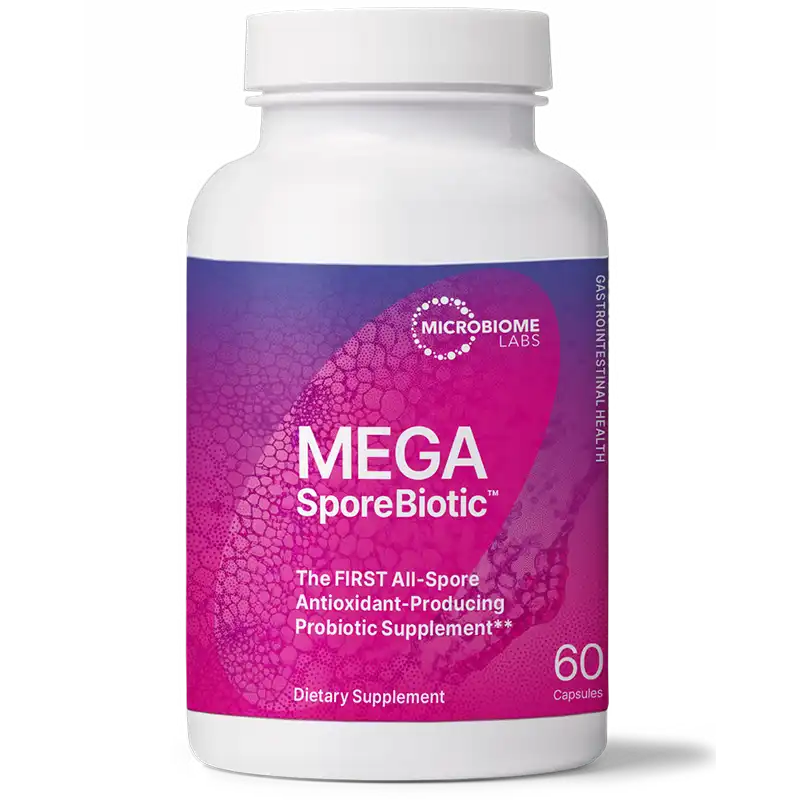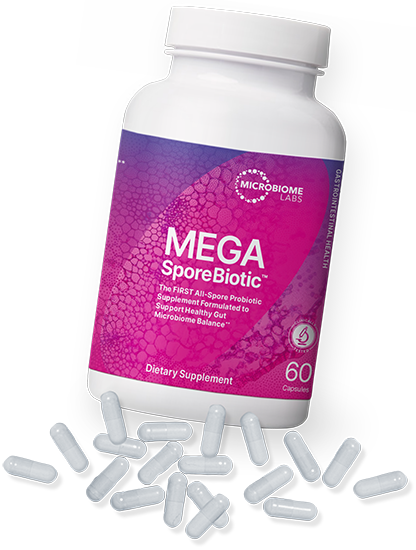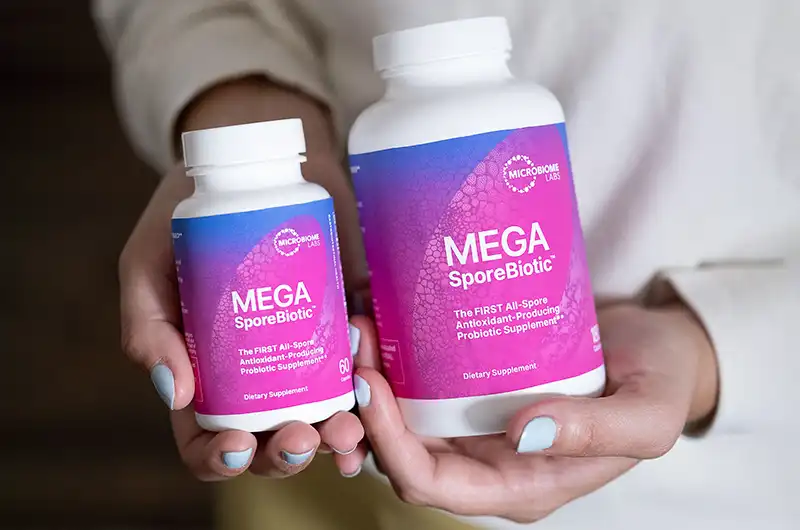
Learn More About MegaSporeBiotic
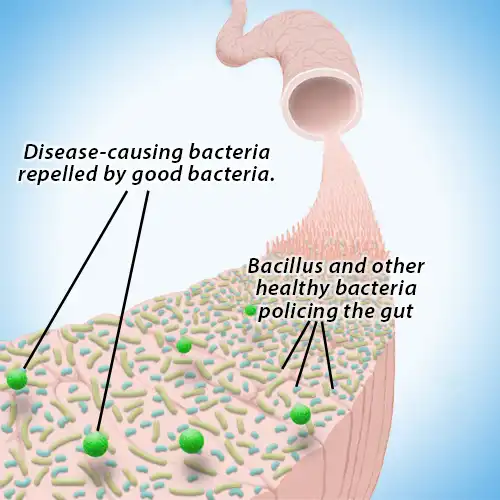
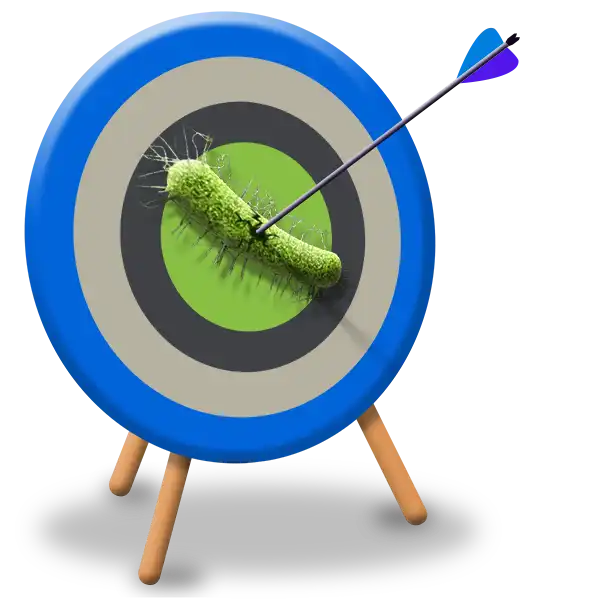

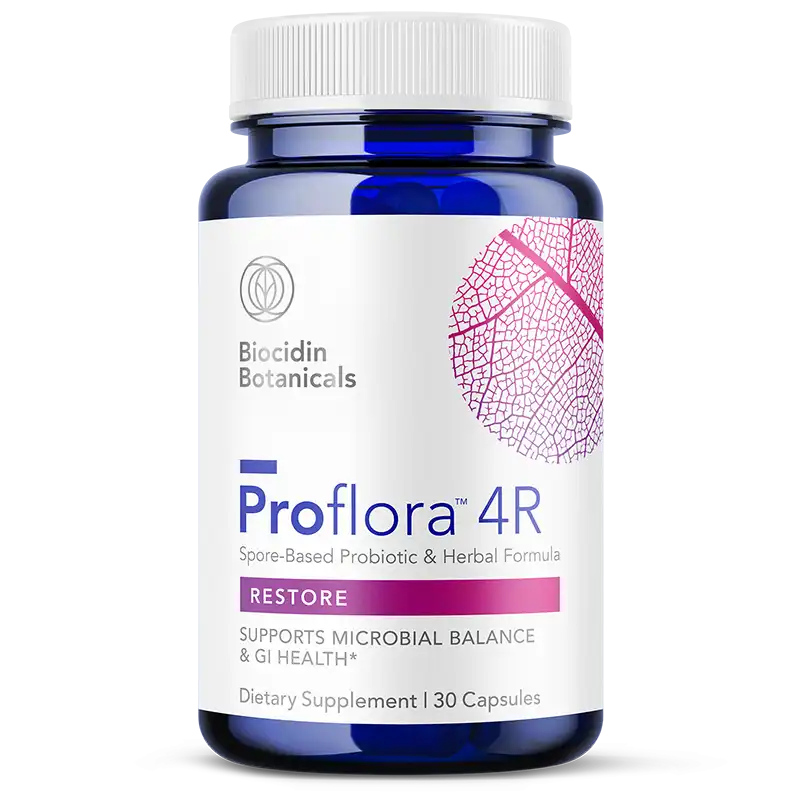
General References
The following references on probiotics, Bacillus spores and Saccharomyces boulardii come from chapter 4 of Michelle’s book C. difficile Treatment & Remedies
- A framework for human microbiome research, The Human Microbiome Project Consortium, Nature 486, 215–221 (14 June 2012).
- Host-Pathogen Interactions: the seduction of molecular cross talk, J. Gut 2002;50:32.
- Recommendations for probiotic use – Floch et al, J Clin Gastroenterol. 2008 Jul.
- Probiotics for the prevention of Clostridium difficile-associated diarrhea in adults and children, Joshue Z Goldenberg et al, 31 MAY 2013 The Cochrane Library.
- Timely Use of Probiotics in Hospitalized Adults Prevents Clostridium difficile Infection: A Systematic Review With Meta-Regression Analysis. Shen NT et al. Gastroenterology. 2017 Jun;152(8):1889-190.
- Validating bifidobacterial species and subspecies identity in commercial probiotic products, Lewis ZT, Pediatr Res. 2016 Mar;79(3):445-52.
- Pathogen elimination by probiotic Bacillus via signalling interference. Pipat P., Yue Z., Thuan N., Seth D. et el. Nature, 2018. Chapter 14 – Probiotics 201.
- Oral spore-based probiotic supplementation was associated with reduced incidence of post-prandial dietary endotoxin, triglycerides, and disease risk biomarkers. Brian K McFarlin. World J Gastrointest Pathophysiol 2017 August 15; 8(3): 117-126.
- Bacillus Coagulans GBI-30 (BC30) improves indices of Clostridium difficile-Induced colitis in mice. Fitzpatrick L, Small J, Greene W, Karpa K, Keller D. Gut Pathog. 2011; 3: 16.
- Bacillus coagulans GBI-30, 6086 limits the recurrence of Clostridium difficile-Induced colitis following vancomycin withdrawal in mice. Fitzpatrick L, Small J, Greene W, Karpa K, Farmer S, Keller D. Gut Pathog. 2012; 4: 13.
- Probiotics for Prevention of Clostridium difficile Infection. Mills J, Rao K, Young V. Curr Opin Gastroenterol. 2018 Jan; 34(1): 3–10.
- Secreted Compounds of the Probiotic Bacillus clausii Strain O/C Inhibit the Cytotoxic Effects Induced by Clostridium difficile and Bacillus cereus Toxins. Ripert G. et al. Antimicrob Agents Chemother. 2016 Jun; 60(6): 3445–3454.
- Probiotic strain Bacillus subtilis CU1 stimulates immune system of elderly during common infectious disease period: a randomized, double-blind placebo-controlled study. Lefevre M, Racedo SM, Ripert G, et al. Immun Aging. 2015;12:24.
- A randomized placebo-controlled trial of Saccharomyces boulardii in combination with standard antibiotics for Clostridium difficile disease. McFarland LV, Surawicz CM, Greenberg RN, Fekety R, Elmer GW. JAMA. 1994 Jun 22-29;271(24):1913-8.
- A randomized placebo-controlled trial of Saccharomyces boulardii in combination with standard antibiotics for Clostridium difficile disease, McFarland LV, JAMA 1994 Jun 22-29; 271(24):1913-8.
- Saccharomyces boulardii inhibits Clostridium difficile toxin A binding and enterotoxicity in rat ileum. Pothoulakis et al, Gastroenterology. 1993 Apr;104(4):1108-15.
- Probiotics in the prevention of antibiotic-associated diarrhoea and Clostridium difficile infection. Hickson M. Therap Adv Gastroenterol. 2011 May; 4(3): 185–197.
- Saccharomyces boulardii Stimulates Intestinal Immunoglobulin A Immune Response to Clostridium difficile Toxin A in Mice. Qamar et al, Infect Immun. 2001 Apr; 69(4): 2762–2765.
- Saccharomyces boulardii protease inhibits Clostridium difficile toxin A Chapter 14 – Probiotics 202 effects in the rat ileum. Castagliuolo et al. Infect Immun. 1996 Dec;64(12):5225-32.
- Review article: Anti-inflammatory mechanisms of action of Saccharomyces boulardii. Pothoulakis, C. Aliment Pharmacol Ther. 2009 Oct 15; 30(8): 826–833.
- Effect of biotherapeutics on cyclosporin-induced Clostridium difficile infection in mice. Kaur et al. J Gastroenterol Hepatol. 2010 Apr;25(4):832-8.
- Lactobacillus acidophilus CL1285, Lactobacillus casei LBC80R, and Lactobacillus rhamnosus CLR2 (Bio-K+): Characterization, Manufacture, Mechanisms of Action, and Quality Control of a Specific Probiotic Combination for Primary Prevention of Clostridium difficile Infection. Auclair et al. Clinical Infectious Diseases, Volume 60, Issue suppl_2, 15 May 2015, Pages S135–S143.
Bacillus References
The following references include Bacillus probiotic species.
- Defining the natural habitat of Bacillus spore-formers, Huynh A. Hong et el, Research in Microbiology 160 (2009) 375e379
- Bacillus probiotics – Mechanism of action and use. Simon M. Cutting, Professor of Molecular Microbiology, School of Biological Sciences, Royal Holloway, University of London. Protexin Healthcare.
- The use of bacterial spore formers as probiotics, FEMS Microbiology Reviews 29 (2005) 813–835
- The safety of Bacillus subtilis and Bacillus indicus as food probiotics, Journal of Applied Microbiology ISSN 1364-5072
- The Intestinal Life Cycle of Bacillus subtilis and Close Relatives, JOURNAL OF BACTERIOLOGY, Apr. 2006, p. 2692–2700 Bacillus probiotics, Food Microbiology 28 (2011) 214e220
- Characterization of Bacillus Species Used for Oral Bacteriotherapy and Bacterioprophylaxis of Gastrointestinal Disorders, APPLIED AND ENVIRONMENTAL MICROBIOLOGY, 0099-2240/00/$04.0010, Dec. 2000, p. 5241–5247
- Bacillus Probiotics: Spore Germination in the Gastrointestinal Tract, APPLIED AND ENVIRONMENTAL MICROBIOLOGY, May 2002, p. 2344–2352
- Pathogen elimination by probiotic Bacillus via signalling interference, https://doi.org/10.1038/s41586-018-0616-y
- Bacillus subtilis antibiotics: structures, syntheses and specific functions, Molecular Microbiology (2005) 56(4), 845–857
- Immunostimulatory activity ofBacillus spores, FEMS Immunol Med Microbiol 53 (2008) 195–203
- Efficacy of Bacillus clausii spores in the prevention of recurrent respiratory infections in children: a pilot study, Therapeutics and Clinical Risk Management 2007:3(1) 13–17
- Effect of Bacillus subtilis spore administration on activation of macrophages and natural killer cells in mice, Veterinary Microbiology 60 1998 215–225
- The effect of Probiotic Bacillus subtilis HU58 on Immune function in Healthy Human, The Indian Practitioner q Vol.70 No.9. September 2017

